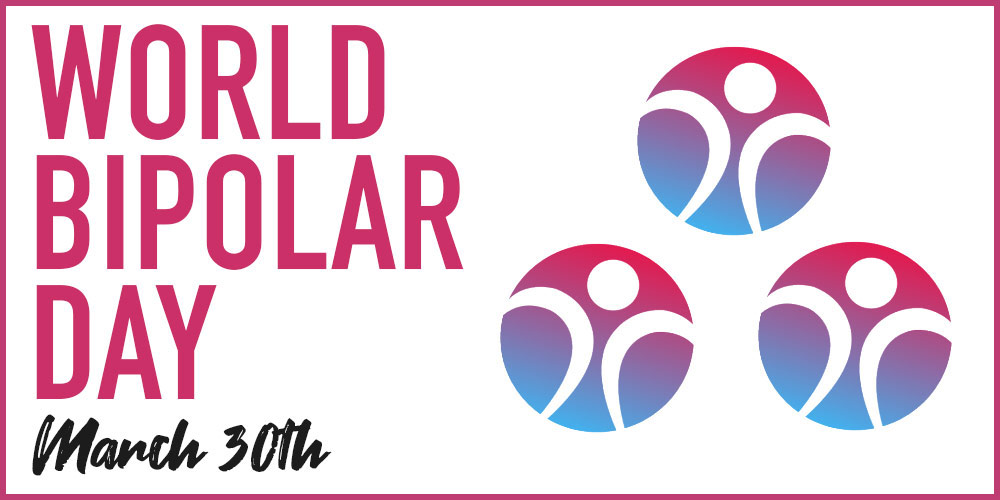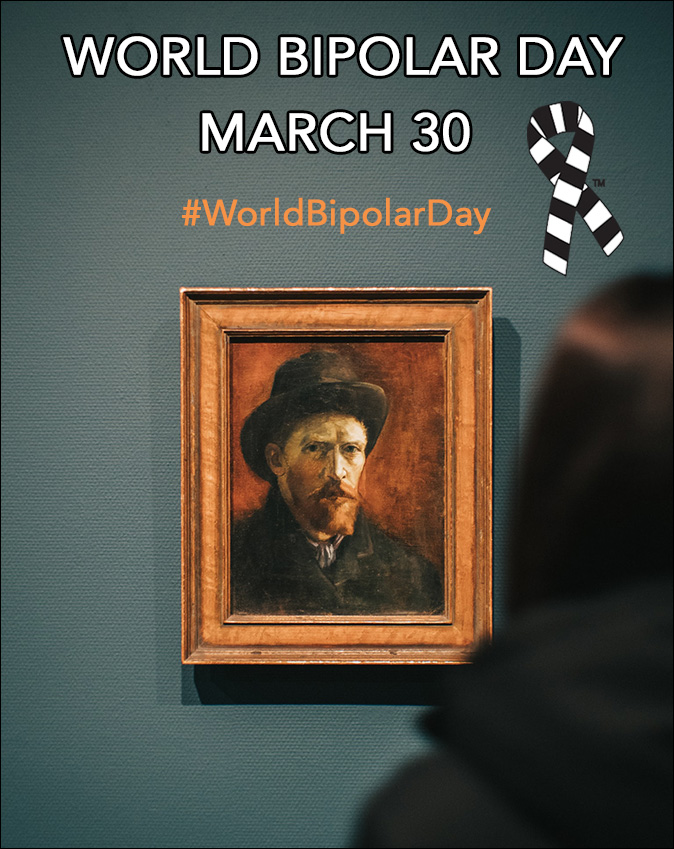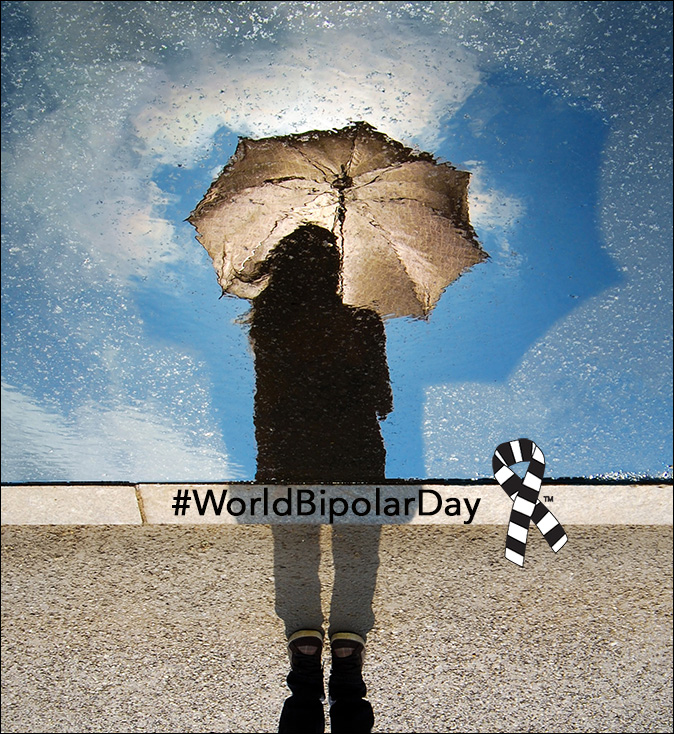
March 30 is recognized every year as World Bipolar Day (WBD). March 30 was chosen because it is Vincent Van Gogh’s birthday and some think he may have had a bipolar condition.
The United States has the highest rate of bipolar disorder in a study of 11 major countries around the world.
According to Health.com, 4.4% of the U.S. population will suffer from bipolar disorder at some point in their lives. This compares with just 0.1% in India.
Bipolar Disorder is more prevalent in high-income countries, and some suggest this may be due to certain cultures being uncomfortable talking about mental illness.
Sadly, people who require bipolar disorder treatment are sometimes at a high risk of both substance use addiction and suicide. Raising awareness and educating people on the scope of bipolar is critical.
Studies have shown that those with bipolar disorder have a “lifetime risk of suicide as high as 20%,” according to the National Institutes of Health.
What’s more concerning, according to a study in the Archives of General Psychiatry, is less than half of all people suffering from bipolar ever get treatment for their condition.
It’s impossible to see mental illness, and due to the stigma, most people will want to hide from it, leading to disruptions in all areas of their life.
That’s why it’s so important recognize and spread awareness about World Bipolar Day (WBD) each year on March 30. This encourages an open discussion, education, and empathy toward those suffering from bipolar disorder.

What is Bipolar Disorder?
Bipolar Disorder, also referred to as bipolar affective disorder, was previously known as manic depression. It’s a mood disorder, which means people experience moods that can swing from an extreme high (mania) to an extreme low (depression).
Bipolar I vs. Bipolar II
There are several different classifications of bipolar disorder with Bipolar I and Bipolar II being the most prevailing.
According to the Depression and Bipolar Support Alliance (DBSA), the most common types of bipolar disorder include:
- Bipolar I
- Bipolar II
- Cyclothymia (Cyclothymic Disorder)
- Not Otherwise Specified (NOS)
People often think that Bipolar I is the worst of the related conditions, without fully understanding the different types of bipolar.
Bipolar I is diagnosed when a person has a manic episode that lasts at least seven days and requires hospitalization. Episodes of depression can also occur and could last for two weeks or more.
Bipolar II, on the other hand, usually shows periods of depression and hypomania, although they don’t go into full-blown manic episodes like with Bipolar I.
People with Bipolar II can feel slightly depressed all the time, which can lead to loneliness, shame, and guilt.
For either condition, it’s not uncommon for people to use drugs or alcohol to cope with the symptoms. If this leads to a substance dependence, it may require depression and addiction treatment to recover from the co-occurring disorder.
What Causes Bipolar?
At present, there is no single cause isolated for bipolar disorder. The factors that can contribute to the onset of the disorder include:
Genetic Causes of Bipolar
Bipolar disorder can run in a family, with a 9% risk for 1st-degree relatives, according to the NIH. This may be due to lifestyle choices, genes or genetic abnormalities.
Twin studies have shown that bipolar is one of the most inheritable of medical conditions, with statistics showing it can be 80% to 85% inheritable. A genetic predisposition can sometimes be triggered by a traumatic event.
Biological Causes of Bipolar
There is a possibility that serotonin and dopamine receptors don’t work properly in people with bipolar, and there could be an abnormality in the reward receptors in the brain.
Environmental Issues That Might Cause Bipolar
There’s a possibility that environmental issues such as trauma, stress or anxiety, and even childhood abuse might be a reason some people are prone to bipolar disorder.

World Bipolar Day Awareness – The Famous Bipolar Connection
People who suffer from Bipolar I are many times goal-orientated individuals. They “shoot for the stars,” often striving to become a multimillionaire or to be famous.
This might be one reason why there are so many famous people with bipolar disorder.
In one study, researchers found that people with bipolar 1 disorder had elevated reward responses in their brain, which may provide a biological mechanism for their underlying bipolar disorder.
The study suggests aiming for goal regulation in bipolar patients due to the fact that periods of striving for more, or high ambitions can produce manic symptoms in those with Bipolar Disorder. These symptoms can last for up to 3 months.
Kayne West is an example of a famous bipolar person who’s been open about his struggles with bipolar. West says that: “People need to be able to express themselves without fear of judgment.”
Does Bipolar Become Worse With Age?
Bipolar disorder is more common in adults and teenagers, however, it can develop in younger children as well, according to the Mayo Clinic. Children who have intense irritability, and don’t fit the criteria for bipolar can be diagnosed with Disruptive Mood Dysregulation Disorder (DMDD).
Bipolar Disorder can occur at any age, although it is typically diagnosed in late teenagers and young adults. As mentioned previously, over half of the people with bipolar fail to get treatment. Without a healthy lifestyle plan and suitable treatment plan, bipolar can become worse with age.
8 Ways to Help Raise Awareness for World Bipolar Day
The goal of World Bipolar Day is to shift thinking about bipolar disorder and promote global awareness and acceptance. We applaud everyone who wants to help promote WBD.
Here are 8 ways to raise awareness for World Bipolar Day:
- Add #WorldBipolarDay to your social media images on Twibbon
- Share your story and add the #WorldBipolarDay hashtag so that others can find it
- Add the WBD logo to your website
- Create a video and a call to action
- Organize a local event
- Write an article for your local newspaper
- Gather personal stories about bipolar and share them on your website
- Wear a bipolar awareness ribbon
The Bipolar Awareness Ribbon is black and white striped to symbolize the highs of mania and the lows of depression. This ribbon color is the symbol for the Ryan Licht Sang Bipolar Foundation that was designed by Ryan’s mother.
There’s also a green ribbon that many people display however, the green ribbon is also used for 45 other causes.
Related Posts
- 23 Movies About Bipolar Disorder
Movies about bipolar disorder are popular because it is a mental health condition that impacts…
- 28 Celebrities and Famous People With Bipolar Disorder
It’s no surprise that there are many celebrities and famous people with bipolar disorder because…
- Borderline Personality Disorder vs Bipolar - Is BPD Worse?
Understanding and distinguishing the differences between Borderline Personality Disorder vs Bipolar Disorder can be difficult…
